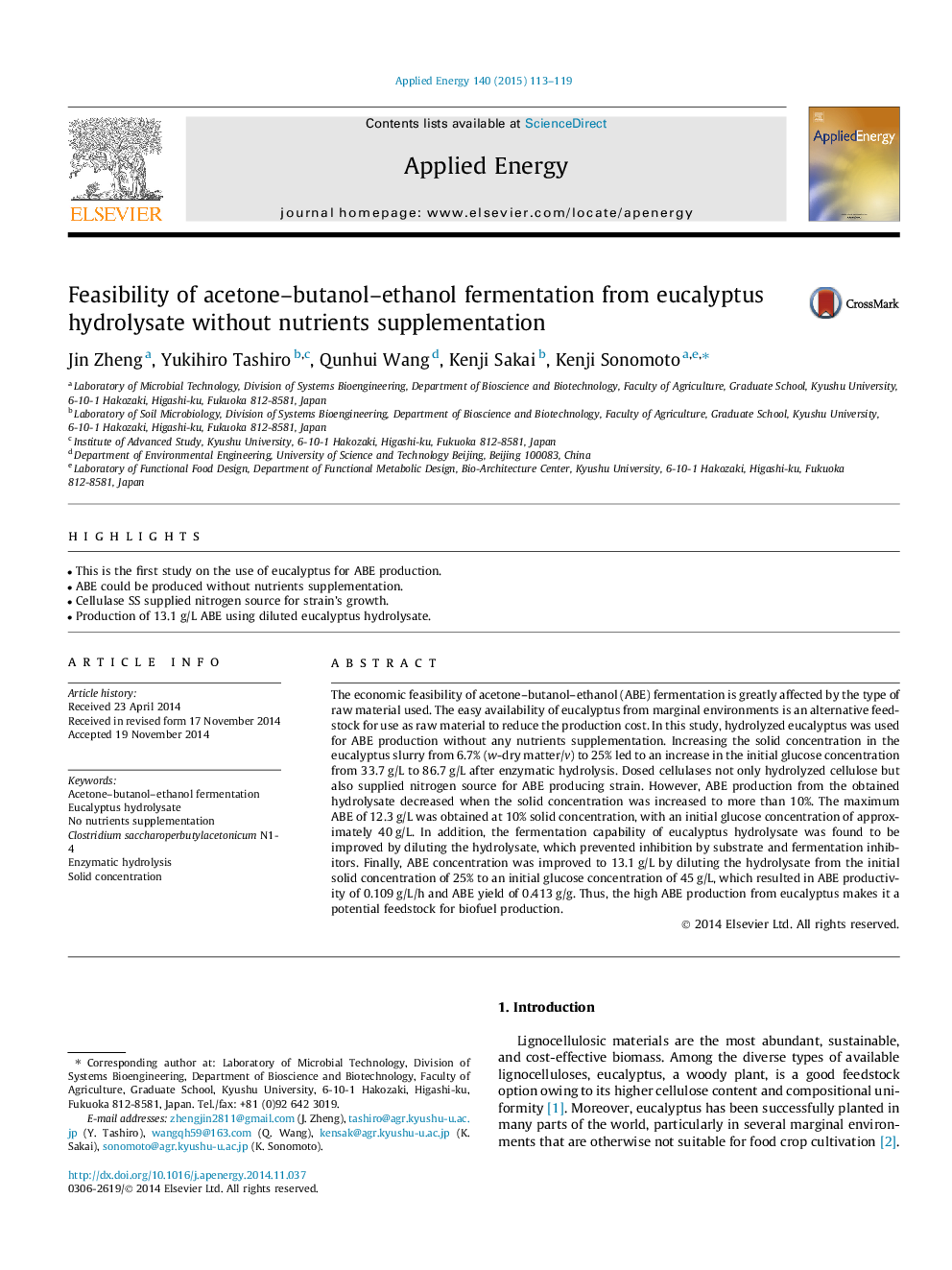| Article ID | Journal | Published Year | Pages | File Type |
|---|---|---|---|---|
| 6687872 | Applied Energy | 2015 | 7 Pages |
Abstract
The economic feasibility of acetone-butanol-ethanol (ABE) fermentation is greatly affected by the type of raw material used. The easy availability of eucalyptus from marginal environments is an alternative feedstock for use as raw material to reduce the production cost. In this study, hydrolyzed eucalyptus was used for ABE production without any nutrients supplementation. Increasing the solid concentration in the eucalyptus slurry from 6.7% (w-dry matter/v) to 25% led to an increase in the initial glucose concentration from 33.7Â g/L to 86.7Â g/L after enzymatic hydrolysis. Dosed cellulases not only hydrolyzed cellulose but also supplied nitrogen source for ABE producing strain. However, ABE production from the obtained hydrolysate decreased when the solid concentration was increased to more than 10%. The maximum ABE of 12.3Â g/L was obtained at 10% solid concentration, with an initial glucose concentration of approximately 40Â g/L. In addition, the fermentation capability of eucalyptus hydrolysate was found to be improved by diluting the hydrolysate, which prevented inhibition by substrate and fermentation inhibitors. Finally, ABE concentration was improved to 13.1Â g/L by diluting the hydrolysate from the initial solid concentration of 25% to an initial glucose concentration of 45Â g/L, which resulted in ABE productivity of 0.109Â g/L/h and ABE yield of 0.413Â g/g. Thus, the high ABE production from eucalyptus makes it a potential feedstock for biofuel production.
Keywords
Related Topics
Physical Sciences and Engineering
Energy
Energy Engineering and Power Technology
Authors
Jin Zheng, Yukihiro Tashiro, Qunhui Wang, Kenji Sakai, Kenji Sonomoto,
